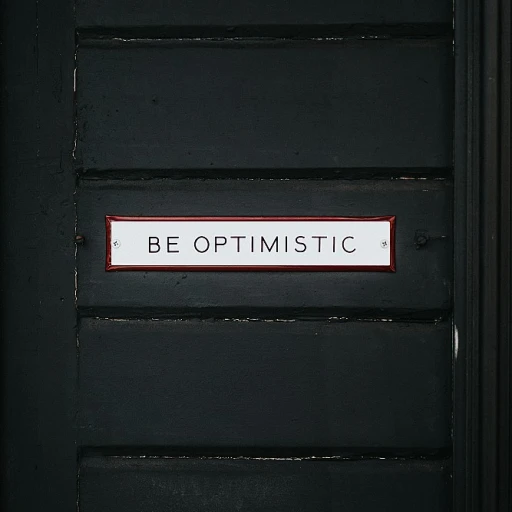Understanding Unfair Treatment
Identifying Unfair Practices in the Workplace
Understanding unfair treatment at work is essential for recognizing its impact on both employees and the broader employment environment. Unfair treatment can manifest in numerous ways and often relates to situations where an employee's rights are not respected. This could include encounters with discrimination based on race, gender, age, or religion—an unfortunate reality that highlights the need for awareness and action.
Employees subject to discrimination or harassment often endure a hostile work environment that directly affects their morale. Key indicators such as wrongful termination, unfair employment practices, and a lack of adherence to employment law signal the presence of these issues.
For individuals facing such adversity, understanding their rights is crucial. Whether it involves taking legal action against an employer for workplace discrimination or seeking help to address issues of sexual harassment, knowing when one's rights are being violated is the first step towards empowerment.
The signs of unfair treatment can be subtle or overt but remain a significant source of distress within the workplace. Recognizing these signs aids in fostering an environment where employees can feel supported and safe. To learn more about fostering a positive work environment, the concept of
enhancing workplace morale provides valuable insights.
Ultimately, the journey towards fairness and equity in the workplace begins with education and awareness, signaling the first step towards a more just and supportive employment landscape.
Common Signs of Unfair Treatment
Recognizing the Telltale Signs
In any workplace, identifying signs of unfair treatment is crucial for maintaining a healthy work environment. Employees who feel discriminated against or treated unfairly can exhibit a wide range of behaviors or encounters, and awareness of these signs can be the first step in addressing issues effectively.
- Discrimination and Harassment: One of the most glaring indicators is systemic discrimination or harassment based on race, gender, age, color, or religion. Employees may report instances of hostile work environments that challenge their protected rights.
- Inequality in Opportunities: Unfair treatment often manifests through unequal employment opportunities. This can include cases where promotions or job roles are offered based on biased considerations, rather than merit or performance.
- Ignoring Employee Rights: Employees might express concerns about their legal rights being neglected. Signs can include being denied legally entitled benefits, wrongful termination, or unjust workload distribution which breaches employment law.
- Hostile Work Environment: Watch out for instances of an environment that stifles employee expression through fear of repercussion, contributing to feelings of being treated unfairly.
- Lack of Support and Recognition: When employees feel their achievements go unrecognized or they do not receive the help they need, it can indicate unfair treatment. This significantly impacts morale, leading to decreased productivity and engagement.
For those encountering these signs, taking affirmative action is crucial. Seeking legal advice or understanding one’s civil rights within the workplace can provide guidance and help affected employees take appropriate steps. The first move towards mitigation is often gathering tangible evidence which can be a strong foundation for legal action if necessary.
To further delve into the experiences related to DEI in workplace environments and how they can influence perceptions of fairness, explore
enhancing the DEI candidate experience.
The Impact on Employee Morale
The Ripple Effect of Unfair Treatment on Employee Morale
Unfair treatment in the workplace doesn't just impact individuals; it resonates across the entire company, creating a ripple effect that can severely damage employee morale. Morale, a fundamental component of a thriving work environment, is often overlooked, yet its deterioration can lead to significant consequences.
When employees are consistently treated unfairly—whether through discrimination, harassment, or other unjust practices—a negative atmosphere is cultivated. This can result in decreased motivation and even lead to wrongful termination fear among employees.
- Signs of Low Morale: Disengagement is a primary indicator. Employees might become less productive, exhibit absenteeism, and show a lack of enthusiasm for work tasks. Signs of workplace discrimination and harassment can also surface through lingering feelings of resentment and isolation.
- Escalated Tensions: In environments where discrimination or unfair treatment becomes the norm, tensions may escalate, contributing to a hostile work environment. Employees may feel the pressure of unresolved conflict based on race, gender, age, or religion, and this tension can even manifest in civil rights-related concerns.
- Impact on Team Dynamics: Cohesion among employees weakens as cliques form, and alliances based on mutual frustration develop. This impacts productivity adversely and creates pockets of mistrust within teams.
To address such issues, it's crucial for employers to recognize these signs of unfair treatment and take appropriate action. By fostering an environment where employees feel heard and valued, employers can help to restore morale and create a healthier, more equitable workplace atmosphere. Establishing a fair work environment not only aids in morale recovery but also enhances overall job satisfaction, reducing the risk of staff turnover and legal action. In such cases, reinforcing employees' rights and providing ample legal advice can also be beneficial to all parties involved. For personal growth tips and establishing boundaries, check out this insightful article about
establishing personal boundaries.
Gathering and Analyzing Employee Feedback
Collecting Insights from Your Team
To address workplace discrimination and unfair treatment effectively, gathering employee feedback is essential. Feedback provides a transparent view of the work environment, helping identify areas where employees may feel treated unfairly based on race, gender, age, or other protected factors.
Methods for Gathering Accurate Feedback
- Anonymous Surveys: Encourage honest responses by asking employees to share their experiences anonymously. This can reveal insights into potential issues like gender or race-based discrimination and harassment.
- Focus Groups: Small group discussions can provide a forum for employees to share signs of unfair treatment and exchange ideas on improving the workplace. It’s vital to ensure these groups are diverse to cover various perspectives.
- One-on-One Interviews: These personal sessions allow employees to communicate specific instances of mistreatment they may have experienced or witnessed without fear of repercussions.
- Suggestion Boxes: A more traditional approach, suggestion boxes can still be effective for collecting feedback, allowing employees to voice concerns in writing without direct confrontation.
Analyzing the Feedback
Once you have gathered the feedback, analyzing it is the next step to understand trends and recurring themes. Look for repeated mentions of specific issues like wrongful termination, hostile work environments, or workplace discrimination.
- Identifying Patterns: Find common signs of unfair treatment in the data to pinpoint systemic issues in the work environment.
- Evaluating Severity: Determine whether the feedback suggests a need for immediate action, such as addressing sexual harassment or a hostile work culture.
Working with HR professionals and legal counsel can help better interpret the feedback within the framework of employment law. Their expertise can assist in distinguishing between isolated incidents and patterns that indicate a broader culture of workplace discrimination.
In the process, maintaining transparency with your team about the feedback’s impact and the steps being taken to address concerns will help bolster employee trust and contribute to creating a fair environment.
Addressing Unfair Treatment
Approaches to Rectify Unjust Work Situations
Addressing unfair treatment in the workplace is essential to ensure that employees feel valued and respected. Here are some steps to consider:
- Acknowledge the Problem: It is crucial for employers to first recognize the existence of unfair treatment, whether it's in the form of discrimination, harassment, or wrongful termination. Identifying the situation is the first step towards solution.
- Initiate Conversations: Engage in open dialogues with employees who may have experienced or witnessed unfair treatment. Encourage an environment where employees feel safe and are willing to share their experiences without fear of reprisal. Case-based discussions can shed light on the depth of workplace discrimination and treatment issues.
- Review Employment Policies: Employers must ensure that their policies align with current employment laws, including those related to discrimination and harassment. Regular updates and clarity on these policies help in protecting employees' rights and reinforcing a fair workplace environment.
- Seek Legal Advice: In cases where employees feel treated unfairly based on race, gender, age, or other protected attributes, seeking legal guidance can help both employees and employers understand their options. Employment law provides a framework for addressing workplace misconduct and protecting civil rights.
- Implement Preventive Measures: Training and workshops focused on recognizing signs of unfair treatment can help in prevention. By addressing potential issues early, employers can create a supportive environment that mitigates the likelihood of discrimination or harassment.
- Encourage Responses: Develop a system through which employees can report unfair treatment safely. Whether through anonymous reporting tools or direct line communications with HR, it's important to assure employees that their concerns are taken seriously.
Addressing unfair treatment is not just about reacting to incidents but also about creating a legal and supportive framework that preempts future issues. By fostering a fair work environment, companies can ensure the well-being of their workforce and enhance overall morale.
Creating a Fair Work Environment
The Foundation of a Fair and Inclusive Work Atmosphere
Creating a fair work environment is not just a goal but a necessity to ensure that every employee is treated with respect and dignity. This process requires implementing strategies that promote inclusivity and equity within the workplace.
- Implement Clear Policies: Establish comprehensive policies that explicitly address discrimination and harassment issues. These policies should be guided by employment law and should clearly define what constitutes unfair treatment. It ensures everyone understands their rights and obligations.
- Training and Awareness: Conduct regular training sessions to educate employees and employers on recognizing signs of unfair treatment, such as gender, age, race, or religion-based discrimination. Use real-life examples to make the training relatable and impactful.
- Open Communication Channels: Facilitate an environment where employees feel safe to voice their concerns about potential unfair practices without fear of retaliation. Encourage feedback and ensure that there are established channels for reporting issues.
- Regular Monitoring and Evaluation: Continually assess the work environment through regular surveys or feedback mechanisms. This can highlight areas where improvements are needed and track the progress of implemented strategies.
- Leadership Commitment: Leadership must be committed to fostering an equitable environment. This includes addressing any reported cases of unfair treatment promptly and transparently. Holding leaders accountable for their actions is a critical step.
- Legal Compliance: Ensure that the work practices comply with relevant legal standards and seek legal advice if necessary. This not only protects the company from potential legal action but also aligns with civil rights and employment discrimination laws.
By proactively addressing workplace discrimination and harassment, companies can establish a working environment where fairness is the norm. Employees will feel more engaged, leading to enhanced morale and productivity. Establishing a culture that prioritizes fair treatment encourages the development of a cohesive team that thrives on respect and equality.













